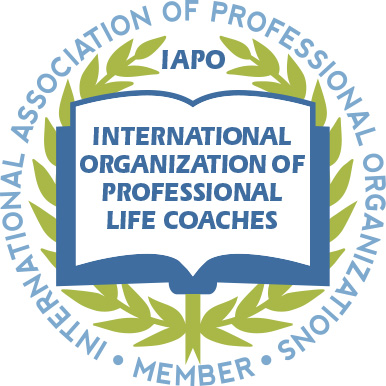The ability to tell a compelling story is a valuable skill that can differentiate a brand, engage customers, and drive success. From marketing campaigns to corporate messaging, storytelling plays a pivotal role in shaping brand narratives, creating emotional connections, and inspiring innovation and action. Today, we discuss the techniques used in storytelling and how to learn how to captivate your audience.
Techniques Used in Storytelling and the Path to Effective Communication
Storytelling is an ancient and powerful form of communication that has the ability to captivate, inspire, and connect people across cultures and generations.
In both personal and professional contexts, mastering the art of storytelling can be a game-changer, enabling you to convey ideas, influence others, and leave a lasting impact.
Understanding the Elements of Effective Storytelling
Before delving into specific techniques, let’s review the fundamental elements that contribute to effective storytelling:
- Compelling characters bring stories to life. Whether it’s a protagonist facing adversity or a relatable persona representing your audience, well-developed characters form the emotional core of your narrative.
- A strong narrative typically follows a logical sequence, with an introduction that sets the stage, a rising action that builds tension, a climax that resolves a conflict, and a conclusion that provides closure and leaves an impression.
- The best stories evoke emotional responses. Whether it’s empathy, excitement, or inspiration, the ability to connect with your audience on an emotional level is essential for a memorable story.
- Every story should convey a message or a central theme, whether it’s about resilience, innovation, or hope. Clarity in communicating these messages ensures that your story leaves a lasting impression.
Learn More about Storytelling for Business

Strategies and Techniques Used in Storytelling
The first most basic strategy for successful storytelling is to know your audience. Tailor your storytelling approach to resonate with your audience’s values, experiences, and aspirations. Understanding what captivates and motivates your audience is critical to crafting a compelling narrative.
Other techniques used in storytelling include the following:
- Use descriptive language and sensory details to paint a vivid picture in the minds of your audience. Engage their senses and immerse them in the world of your story.
- Every engaging story involves conflict, whether internal or external. Conflict creates tension, drives the plot forward, and keeps the audience invested in the outcome.
- The rule of three—a principle that suggests that things that come in threes are inherently more satisfying and more effective—can be applied to storytelling. Use patterns, lists, or three-part structures to make your story more memorable and impactful.
- Incorporate unexpected twists, revelations, or insights to keep your audience engaged. Surprise elements can add depth and intrigue to your storytelling.
- Authentic stories are often the most relatable and impactful. Share personal experiences, vulnerabilities, or anecdotes to convey authenticity and connect with your audience on a human level.
Find More Resources and Guidance about Techniques Used in Storytelling
Tips to Improve Your Storytelling Skills
Like any skill, storytelling improves with practice. A simple strategy to improve your storytelling skills is to use them – often. Share stories with friends, family, or colleagues to gain feedback and refine your technique.
Other strategies to take your storytelling ability to the next level include:
- Pay attention to how successful storytellers captivate audiences. Learn from a variety of storytelling formats, including books, movies, podcasts, and live performances.
- Solicit constructive feedback from peers or mentors. Understanding what resonates with your audience and refining your storytelling based on feedback is essential for growth.
- Read books on storytelling, attend workshops, or explore online resources that delve into the art and science of effective storytelling. Understanding storytelling techniques and principles can enhance your skills.
- Authentic storytelling often requires vulnerability. Don’t be afraid to share personal experiences, struggles, or triumphs. Embracing vulnerability fosters connection and empathy with your audience.
Get Your Own Storytelling Workbook
Techniques Used in Storytelling that Harness the Power of Narrative
Storytelling is a skill that can be honed and developed through practice, exploration, and a commitment to mastering the art of effective communication.
By employing key techniques and strategies, you can become a proficient storyteller capable of captivating, inspiring, and connecting with your audience.
Whether in personal interactions, business presentations, or creative pursuits, the ability to tell a compelling story is a valuable asset that can elevate your communication and leave a lasting impression on those around you.
Thank you as always for reading.
If you haven’t yet subscribed, please visit KindCompassCoach and enter your email address so you never miss a post.
As Amazon Associates, we may receive a small commission (at no cost to you) for items purchased through links in this post.

Joan Senio is the founder of KindCompassCoach. Joan’s career includes clinical healthcare plus 20+ years as an executive in a nationwide health care system and 15 years as a consultant. The common threads throughout Joan’s personal and professional life are a commitment to non-profit organizations, mental health, compassionate coaching, professional development and servant leadership. Joan has had the privilege of mentoring early and mid-career professionals as well as current and future executives and leaders. She is a member of the International Organization of Life Coaches, serves as a thought-leader for KuelLife.com and is also a regular contributor to PsychReg and Sixty and Me. You can read more about Joan here: Joan Senio.





No Responses